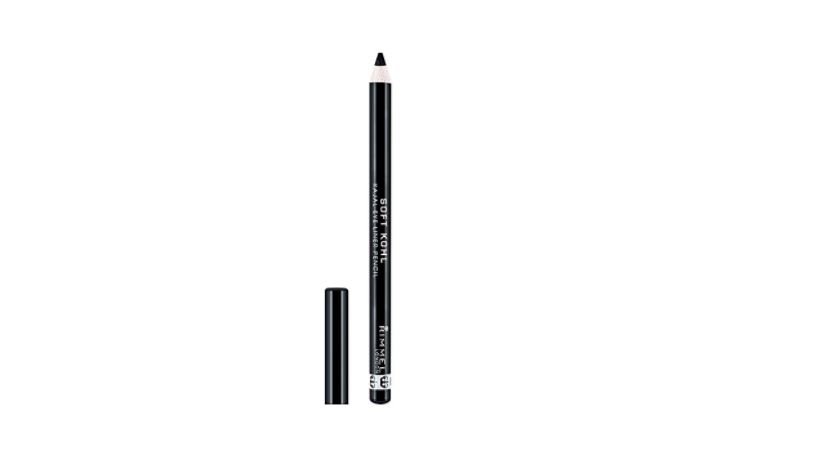
“Kohl is indeed one of the most ancient ophthalmological (branch of medicine that deals with all things eye) preparations known to humans.”
Kohl is the expensive magic eyeliner that promises darker shades than you can find anywhere. Use it for that cat eye, or for the heavy bat eye or all the thirty plus eyeliner styles out there. Remember, the darker the eyeliner, the better, and kohl is apparently the darkest in the market.
It goes by different names with the Arabs and Egyptians referring to it as kohl (which we do now too), the Romans and Greeks called it Kollurion (which is slightly too long) and the Indo- Pakistani’s call it Surma (which is cute but doesn’t sound as dramatic).

“The Wanton, though she knows its dangers / must needs smear Kohl about her eyes / and wake the interest of strangers / with long-drawn, hoarse, erotic sighs.”
Edward Gorey
All wanton women, gather around and let’s buy some kohl! There are some handsome strangers awaiting our erotic sighs and smoky eyes. We will have to go to North Africa to get it though, because original kohl has lead, and it seems to lead is bad for you. But let’s not skip ahead, let’s find out when was it discovered?
So Kohl use started in the Bronze age (3500-1100). The middle east, North Africa, West Africa, South Asia, modern Asia, East Asia (so, most of Asia really) and the Mediterranean are all historically known to have widespread use of kohl. It was used by everyone- men, women and children- but mostly by women.
“Ancient Egyptian men and women wore eye paints from childhood, throughout their lives, and were adorned in death.”
Introduction to Harquus: Part 2: Kohl
This was interesting. There were as many as six recipes for kohl by the 17th century. In Ancient Egypt for example,
“galena was pounded with frankincense and gum, and then mixed with goose fat. It was put in dough or cow dung and burned. The burning drove Sulphur out of the galena to form lead oxide. This was quenched with milk, and then pounded in a mortar with rainwater. This was decanted several times and the finest powder was collected, dried, and divided into tablets.”
Different countries had different ways and used different products to make kohl. Some countries such as North Africa and the middle east use “galena (lead sulfide), while those in the west use amorphous carbon or organic charcoal.” The main issue in using kohl is the lead properties that are said to cause lead poisoning.
Clearly Kohl was incredibly popular back then. In fact, it was so popular in Egypt that “even the statues of Egyptian gods had their eye paints reapplied daily,” and women were buried with pouches of kohl to take to the afterlife. This eyeliner was used at a grand scale because the ancient civilizations believed that it had many benefits. Here are some of them:
Vanity is an old tradition. Kohl was used around the eyes to enhance beauty, and for the tattoos around the face for the same purpose. Women from ancient times cared about looking good, almost more than women today. With their jewelry and adornments, and make up. In Ancient Egypt, it was used for everyone, but better materials for the higher class and worse for the lower class. Same as today, you can buy what you can buy, but buy it, we will.
Kohl comes in different colors and was used for different reasons. For example, black and green in ancient Egypt. The black was used for the top lid, while green for the lower lid to enhance and contour.
It was also used to enhance the eyebrows and facial tattoos, although not always in the best way. Some women drew thin lines right across their foreheads while others preferred to have them as thick as heavy on the eyebrows as possible. Some women (Tunisian’s especially) did both!
Apart from protecting the eyes against the Sun, and thus improving eyesight, or rather preventing the deterioration of the same, kohl is thought to have had more benefits.
“kohl was more than just a beautifying cosmetic and the forefather of sunglasses, but also an important antibacterial ointment.”
Ophthalmology of the pharaohs:
Antimicrobial kohl eyeliner in ancient Egypt
It was thought that it was helpful to the immune system, by “stimulating production of nitric oxide” (Wikipedia). Kohl was also made of stibnite which has an antimony base. This was believed to strengthen the eyes somehow.
Most of these areas were arid, dessert areas. The Egyptians especially were prone to eye infections and diseases due to harsh desert conditions, and the flooding of the Nile every year. The eyeliner would kill if bacteria and prevent infections.
Even the tearing of the eyes (a side effect of having soot in your eye) was said to keep the eyes clean. It was like a constant wash. So if you poke yourself in the eye with your eyeliner (happens way too often) and you tear up, realize that your eyes are now cleaner.
It is also said that the eyeliner would trap dust particles and as a fly repellant.
Random right? But before sunglasses were invented, (the sun has always been there) people used kohl around the eyes to protect from the suns glare.
So basically, the galena (the lead which is considered dangerous now) has UV absorptive properties. But only when applied in a thin film.
“The black shiny particles screen the eyes from the brilliance and reflection of sunlight”
Zinc oxide, an ingredient of sunscreen today, was also used to enhance the UV properties of galena and because it also had “’ powerful sun-blocking” qualities.
Instead of buying sunglasses, you could always invest in kohl.
It is on amulets, bracelets, beads and even clothes. The evil eye has been feared throughout history in most cultures and religions.
“The idea of the evil eye is associated with the ideas of envy, jealousy and even extreme adoration, and may be intentional or unintentional”
When women speak
The evil eye is that look intended to cause harm or bad luck to its recipient and is usually caused by jealousy or malicious intent. However, it can be in the form of disproportionate praise and admiration. In ancient times, anything that could not be explained, was blamed on the evil eye, thought capable of causing actual physical illness and bad luck.
“The Hindus believe that, even though men are capable of casting the evil eye, women are the most common sources of the glance”
Jewish Gift Book
Basically, they believed that a malicious look was enough to spread bad luck and that women were more vulnerable to it. An opinion that is still widely supported today, as we hear that women are more emotional and jealous than men are.
In ancient times, Women believed that applying kohl protected them from the evil eye. They also wore it to prevent themselves from accidentally transmitting the evil eye. They also painted their children’s faces with it in an effort to protect them from the evil eye.
Kohl is used across many religions, Islam, Buddhism, Judaism, Christianity, etc.
“The Prophet Mohammed used kohl and recommended others to use it because he believed that it was beneficial for the eyes[13] and it is used by Muslim men today during Ramadan as a sign of devotion”
In 2010, the General Authority of Islamic Affairs and Endowments released a fatwa(restriction) that had been placed on kohl, saying it was now acceptable as long as “the intent was not to attract attention from the opposite sex.” (the National)
By now you have gathered that there is some disagreement about whether or not kohl is good for the eyes. The US, for example, has an FTA ban on brands produced with lead.
The movement to eliminate lead from kohl started in the 1990s by scientists who said that increased levels of lead in the bloodstream leads to lead poisoning and lead intoxication. Some of the problems associated with high levels of lead in the body are: Anemia, Low IQ, growth retardation and kidney problems.
Others say however, that the traditional method of making kohl has many major health benefits. And that organic lead is the toxic one, whereas, inorganic lead (which is the lead in Galena) was an insoluble lead salt and as such good for the body.
Whichever side you ascribe to, note that kohl was used for thousands of years and has proven health benefits. However, be “warned that the commercial brands produced today are nowhere near the quality of surma used centuries ago.” As Syed Muhammad Rehan Alam, a hakim, said.